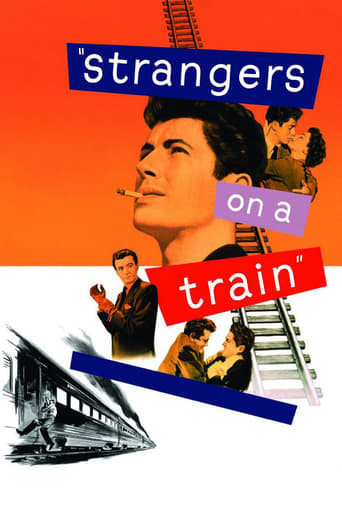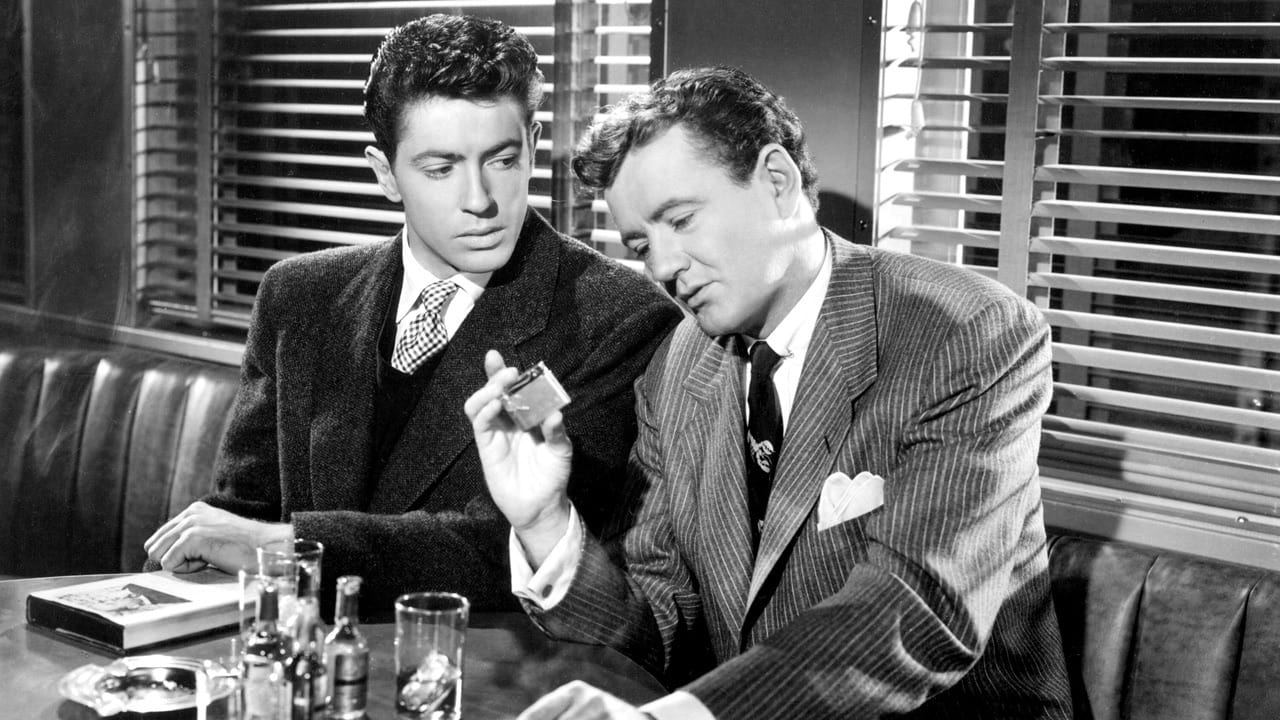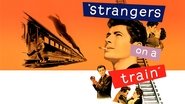JohnHowardReid
Alfred Hitchcock induced Chandler to break his self-imposed exile from Hollywood for Strangers on a Train (1951). Here we have another screen classic - like Double Indemnity - for which Chandler is not given due credit. Part of this lapse is due to Hitchcock himself who, in later interviews, constantly derided Chandler's contribution. "The work he did was no good," good old Hitch complained to many a celebrated critic. But despite the Chandler script's supposed lack of quality, super-indulgent old Hitch had used it anyway. Adapted from a Patricia Highsmith story, the Chandler hand is evident not only in the inward-twisting plot and contrastingly classy and gaudy atmosphere, but in the tensely nervy and often cynical dialogue, - and even more particularly in the characterization of the festeringly bizarre but remarkably personable psychopath so brilliantly played here by Robert Walker.
frankwiener
As in the case of many of Alfred Hitchcock's best films, this is a story about an innocent, socially respectable individual who suddenly discovers himself as an unwilling victim of malevolence and depravity. Bruno Antony (Robert Walker) stalks tennis pro Guy Haines (Farley Granger) and utilizes Haines' publicized, miserable marriage in order to implicate him in a twisted double murder plot to which Haines never consents. The success of this movie hinges upon three key elements, (1) the riveting portrayal of Walker as a demented psychopath in the best performance of his all too short acting career, (2) the extraordinary artistry of my very favorite director, Alfred Hitchcock, and (3) the outstanding technical skills of cinematographer Robert Burks.Observe at the beginning of the film how Bruno's shadow eclipses that of Miriam and her friends in the boats as a very dark forewarning of what is to follow. In general, the merrymaking of the revelers at the carnival serves as a stark contrast against the dead seriousness of Bruno's business there. In fact, he is even dressed in a formal business suit, which is an oddity in that setting by itself.No matter how many times the famous shot of the reflection in the eyeglasses is explained to me, I will never understand how that was photographed so egffectively. The sensational carousel scene in which Guy is literally ensnared into Bruno's trap must be seen to be believed. No description in words can give it justice.Among the weaknesses of the film are Dmitri Tiomkin's often overbearing musical score, which I felt also occurred in another Hitchcock classic, also about a tennis player, "Dial M for Murder", and a tennis match that ran far too long, which reminded me of the overlong symphony near the end of the re-make of "The Man Who Knew Too Much" (1956).These momentary flaws are more than compensated by the movie's many dramatic and cinematic strengths. The image of Bruno sitting in the stands of the tennis match with his head fixed dead ahead while all of the spectators around him are following the ball demonstrates just how seriously discordant he is with the rest of the world. I also noted how Hitchcock made Miriam, Guy's loathsome, unfaithful wife, so disagreeable to me that I found myself actually approving of her violent strangulation. In this regard, was I any less sinister than Bruno in my consent of the murder of another human being, no matter how objectionable that human being might be? Once again, as a passive spectator, I felt very successfully tricked by the master of manipulators. It wasn't the first time, and it surely won't be the last.
atlasmb
The basic conceit of "Strangers on a Train" is simple and clever. Writing a script to make it believable, though, is not so simple. That the writers and the director worked out all the obstacles to make it not only believable, but a strong story, is a real achievement. That achievement is aided by the brilliant performance by Robert Walker as Bruno Antony--a quirky, insinuating man with strange ideas and unrefined social skills.When Bruno meets Guy Haines (Farley Granger) by chance on a train, the wheels are set in motion for an ingenious crime plot in which one of them is the unwitting accomplice of the other. Director Hitchcock is certainly in his element with a lead character who feels like he has lost control of his life. The black and white cinematography only serves to emphasize the shadows in which much of the action takes place. Kudos to the beautiful Ruth Roman as Guy's questioning girlfriend Anne Morton, Marion Lorne as Guy's estranged wife Miriam, and especially Patricia Hitchcock as Anne's younger sister Barbara, who provides much of the humor, charm and cleverness of the story.This is not a whodunnit. We know who did it. But Hitchcock takes us on a ride through the murky waters of a dark personality, tightening the screws of intrigue until only one unthinkable outcome seems possible. Who would not want to ride his roller-coaster of suspense?
ags123
Hitchcock is clearly in his element adapting Patricia Highsmith's quirky novel to the screen. Here again we have a wrongly accused man out to expose the true culprit while attempting to elude the police. However, this time, the hero is not entirely innocent. And the villain is irresistibly charming. Add to that a subtle homosexual undertone making for an engaging and suspenseful film. Robert Walker steals the show in what was a complete reversal of his wholesome image. Also outstanding is Patricia Hitchcock as the wise and witty voice of reason, the most extensive of her roles in three of her father's films. Ruth Roman, culled from Warner's contract players and heavily promoted at the time, is a rather weak link, not the typical Hitchcock blonde, and far too uptight and affected to be convincing as unassuming Farley Granger's love interest. Minor characters - Leo G. Carroll, Marion Lorne, Laura Elliott - excel at adding depth to the story. Of note is the costume design: Bruno's rakish dressing gown has appeared in various Warner Bros. productions, seen on Monty Woolley in 1942's "The Man Who Came To Dinner" and on Milton Berle in 1949's "Always Leave Them Laughing."



 AD
AD












